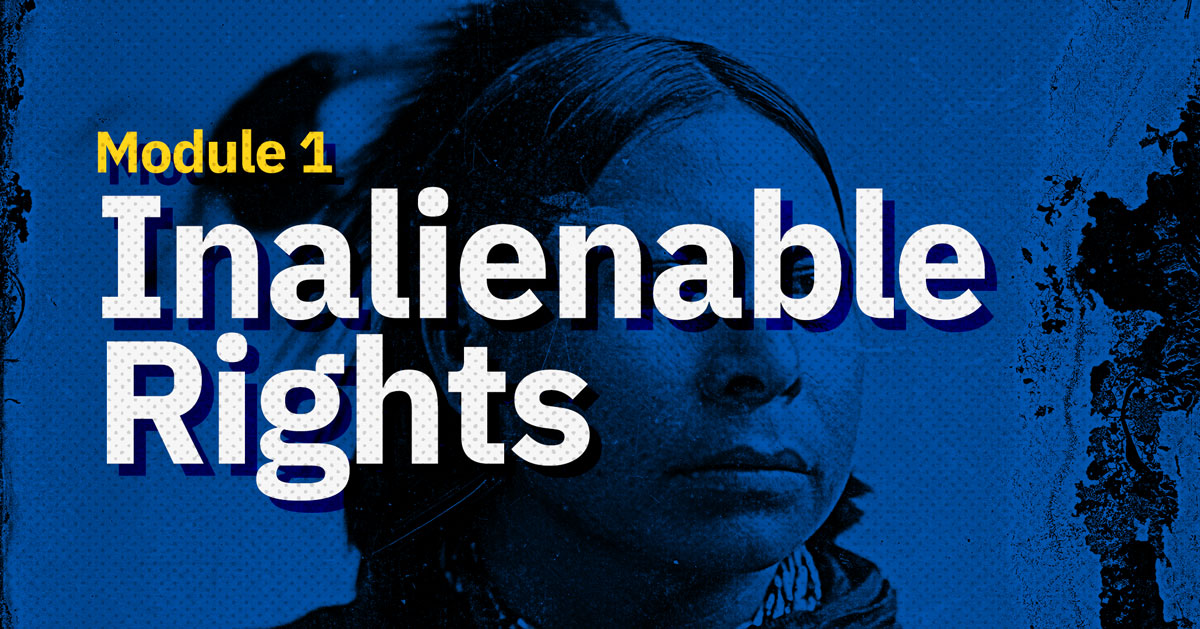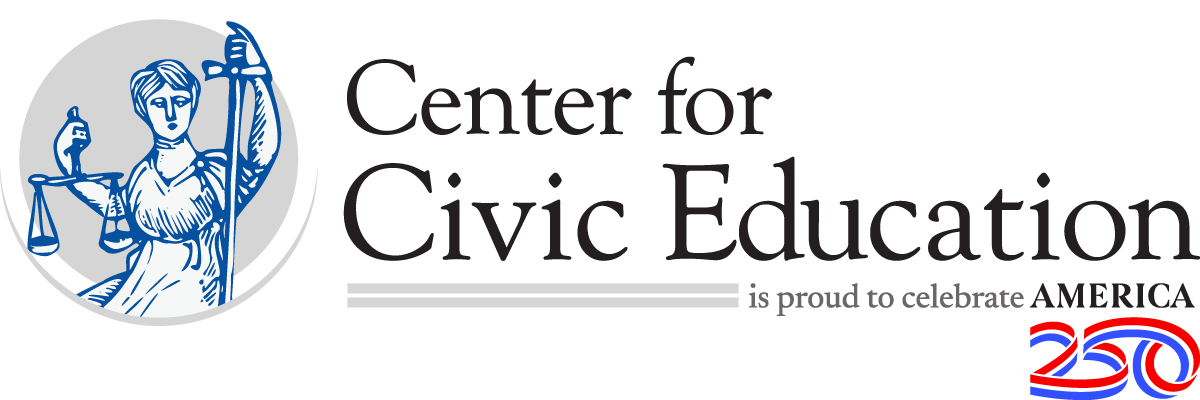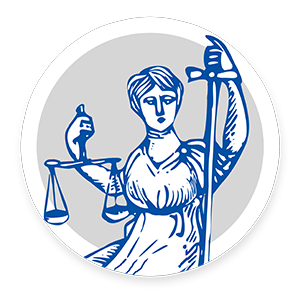
Module 1: Inalienable Rights
Pre-Lesson Preparation
- How have Indigenous peoples been included or excluded from promises of life, liberty, and the pursuit of happiness?
- How have rural communities been included or excluded from the promises of life, liberty, and the pursuit of happiness?
- assimilate To adapt to a new culture, usually by force.
- colonization Taking control of another place.
- displace To force out of a place.
- disproportionate Unequal.
- entrepreneurship Starting or running a business.
- inalienable rights Rights afforded to all people that cannot be taken away.
- Indigenous peoples Inhabitants of a place since ancient times with distinct social and cultural groups who share collective ancestral ties to the lands and natural resources where they live, occupy, or from which they have been displaced, often by colonization.
- inherent essential, natural, or very important.
- proclamation A public or official announcement that deals with a matter of great importance.
- resilience Strength to recover from a challenge.
- sovereignty Having the ultimate authority in a state or country.
Note: This lesson contains material about injustice that some students might find offensive or potentially traumatizing. This material has been included to give students a sense of the inequities and obstacles faced by rural and Indigenous communities. A culturally responsive classroom will provide a welcoming and safe environment where students feel comfortable discussing difficult topics. Ensure that students feel comfortable sharing appropriate personal perspectives. Consider establishing classroom norms that encourage discussion. Educators can model empathy by actively demonstrating kindness, actively listening to all students’ perspectives, addressing conflicts respectfully, acknowledging different viewpoints, and showing compassion toward others.
In this lesson, students will explore the inalienable rights of both rural and Indigenous communities. Students will examine if rights have been protected or denied to these groups. Educators should have an awareness of how both Indigenous and rural communities have been overlooked and underserved through much of our nation’s history. Additionally, educators should have knowledge about appropriate terminology.
Indigenous communities in the United States have a varied and complex history in the United States. At different points throughout this history, these communities have been shaped by both recognition and denial of their inalienable rights. While Indigenous communities have been viewed as sovereign nations since the earliest years of U.S. history, the rights of sovereign nations have not always been respected through treaties like the Marshall Trilogy. Sovereign nations are independent and self-governing, meaning they have the authority to make decisions about their people, land, and laws without interference by the U.S. government. Several laws and policies since have sought to assimilate and/or systematically erase the history and culture of Indigenous populations and take land from these communities. One such policy is the Indian Removal Act of 1830. It stripped away sovereign rights from Indigenous communities by forcing relocation and setting up reservations. Today, Indigenous communities continue to fight for the restoration of their rights.
Often overlooked in national policies and underserved in infrastructure and economic development, rural communities in the United States have an intricate history. Although not sovereign in the same way as Indigenous nations, rural communities have also had to deal with issues related to autonomy and self-determination. The Homestead Act of 1862, while providing land and opportunities for many settlers, also marked the beginning of federal policies that prioritized the national agenda over specific needs of rural populations. Since that time, rural communities have had to fight for fair representation, access, and local control of resources. This continued struggle highlights how these communities have to work for their needs and their voices to be included in national policies and laws.
To support understanding of this topic prior to lesson delivery, educators are strongly encouraged to watch the scholar video that accompanies this lesson:
Additional resources for educator background include the following:
- Issues Facing Native American Communities Today: Native American Heritage Month (video)
- Denial of Native American Citizenship and Voting Rights: Native American Heritage Month (video)
- Indian Citizenship Act of 1924: Native American Heritage Month (video)
- Tribal Sovereignty & Native American Citizenship: Native American Heritage Month (video)
- Judicial Toolkit on Indian Law
- Library of Congress American Indian Law Court Case Guide
- Key Federal Law Cases
- Dawes Act of 1887
- Snyder Act of 1924
- Indian Claims Commissions Act of 1946
- “Rural America: The America That is Overlooked” (Berkeley Political Review article)
- The Homestead Act of of 1862
- Report on Rural America by the United States Department of Agriculture: 2023 Edition
- The Natives and the English - Crash Course US History #3 (video)
Educators should preview all student materials and resources prior to the lesson.
Each EUP module intentionally integrates literacy to deepen students’ understanding of historical and contemporary issues and their impacts on rural and Indigenous communities through reading, writing, speaking, and listening. Lessons include structured academic discussions, Paideia seminar style dialogue, and reading supports such as annotation stations using primary sources to support critical analysis and civic reasoning. Educators are encouraged to introduce and reinforce new academic vocabulary using strategies they are familiar with such as slide decks, word walls, visuals aids, games, and illustrative definitions to help students confidently apply academic language in civic, geographic, economic, and historical contexts. While students have multiple ways they can use critical analysis and civic reasoning to answer questions throughout this module, possible answer keys have been shared as a framework for you to use at your convenience.






